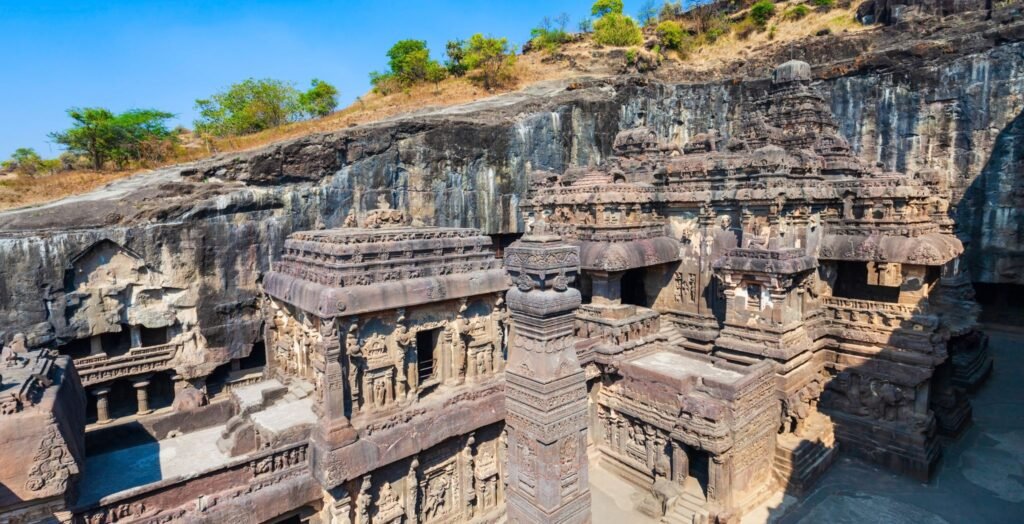Tucked away in Maharashtra, in the Western Ghats of India, is the Kailasa Temple, which is regarded as one of the most magnificent architectural wonders of antiquity.
Housed within the well-known Ellora Caves, this temple is seen not only as a site of religious significance but also as a remarkable embodiment of human ingenuity, willpower, and engineering brilliance.
Thirty-four rock-cut temples and monasteries dating from the sixth to the tenth centuries may be found in the Ellora Caves, which are recognised as a UNESCO World Heritage Site.
The Kailasa Temple, sometimes called Cave 16, is the jewel in the crown of these great buildings.
What distinguishes it? It is completely cut from a single rock, yep, a single, solid rock from top to bottom. Architects, historians, and tourists alike are still in awe of this massive masterpiece, which is more than just a temple.
What is the Temple of Kailasa?
One of the most venerated gods in Hinduism, Lord Shiva, is the object of devotion at the Kailasa Temple. The temple is supposed to symbolise Mount Kailash, which is thought to be Shiva’s heavenly residence.
This location is among the most remarkable works of art in Indian history because of the size, accuracy, and complexity of the carvings.
The construction of this temple is quite amazing. It wasn’t constructed using the traditional method of piling bricks and stones.
Rather, it was cut from the top down of a single mountain. Imagine employing just chisels, hammers, and labour to remove more than 200,000 tons of rock.
More than 1,200 years ago, that is precisely what took place here.
Importance of the Temple of Kailasa
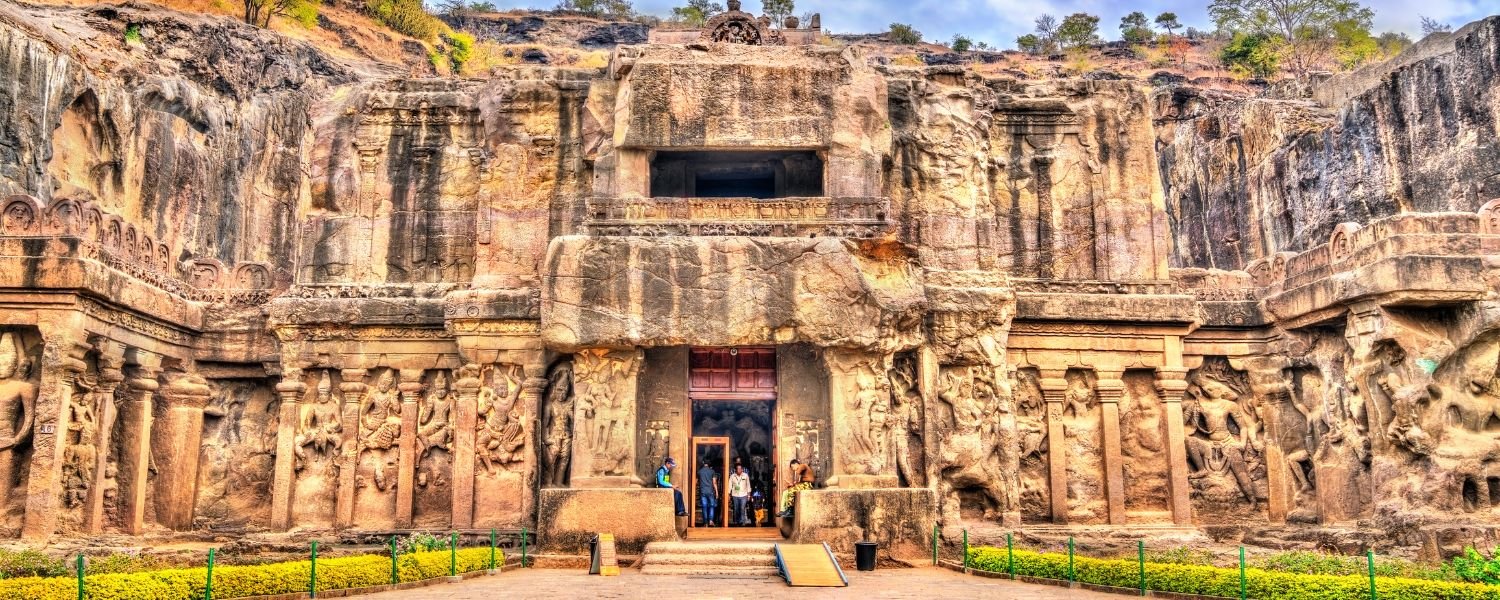
The Kailasa Temple is a component of the Ellora Caves, a much larger complex that also contains Jain, Hindu, and Buddhist temples. This multireligious location represents India’s enduring values of cultural diversity and tolerance. However, Kailasa is unique due to its grandeur, beauty, and intricacy.
It is the world’s largest monolithic rock-cut construction. Details are more important than size. From enormous stone elephants to elaborately portrayed tales from Hindu epics like the Ramayana and Mahabharata, the temple is adorned with exquisite sculptures and carvings.
In addition to pilgrims, it has drawn academics, adventurers, and artists over the years. People travel from all over the world to observe how a single stone can be used to create a full temple, complete with halls, pillars, shrines, and intricate artwork.
Reasons to Go to the Kailasa Temple
It’s like travelling back in time when you visit the Kailasa Temple. It is an experience that connects the past and present, not just a religious monument.
The temple’s origin and the time period it belongs to will pique your interest if you’re a history buff. If you’re interested in engineering or architecture, you’ll be astounded by the amount of planning and accuracy that went into this enormous project without the use of contemporary equipment.
Additionally, the temple’s grandeur, tranquillity, and ageless appeal will leave you speechless if you simply enjoy exploring beautiful locations.
The Kailasa Temple provides a once-in-a-lifetime opportunity to experience the magnificence of ancient India, regardless of whether you are an art enthusiast, a spiritual seeker, or simply an inquisitive tourist.
Kailasa Temple’s History and Architecture

Building of the Temple of Kailasa
During the Rashtrakuta dynasty’s rule in the eighth century CE, the history of the Kailasa Temple begins. King Krishna I, who reigned from approximately 756 to 773 CE, ordered it.
He aimed to build a temple that would be greater than all others in terms of majesty and spiritual might, and he was successful, according to inscriptions and historical documents.
The fact that this temple was cut out vertically is its most amazing feature. The artists started at the top of the rock and worked their way down gradually, as opposed to most temples that are built from the ground up.
With this method, there was no margin for error; thus, careful planning was necessary. The entire structure might be destroyed with a single incorrect cut.
According to historians, the construction of the Kailasa Temple took more than a century. Generation after generation of sculptors, artisans, and thousands of workers toiled diligently to realise this goal.
Using simple hand tools, more than 200,000 tons of basalt rock were removed during construction.
However, the outcome is stunning. The temple is made of one huge stone and has several shrines, courtyards, mandapas (halls), stairways, and balconies in addition to its solitary sanctum.
A Temple Honouring Lord Shiva
The temple is dedicated to Lord Shiva, one of the primary Hindu deities, as previously mentioned. In the sacred trinity of Shiva, Vishnu, and Brahma, he is referred to as “The Destroyer.”
Mount Kailash, thought to be Shiva’s heavenly home, is symbolised by the central building that contains the Shivalinga.
Interestingly, the temple complex also features images of other gods and goddesses, including scenes from several Puranic stories, as well as Vishnu, Parvati (Shiva’s consort), and Ganesha. As a result, the temple has a deep and complex story that captures the spiritual and cultural values of ancient India.
Architecture and Design
Although the Kailasa Temple most closely resembles the Shikhara-style temples seen in North India, it also exhibits a combination of Dravidian and Nagara architectural styles.
The rising tower above the inner sanctuary, known as the shikhara, represents a mountain and is appropriate for a temple devoted to the Lord of the Himalayas.
The layout of the temple includes a
Big Shivalinga at the main shrine.
Main shrine with a large Shivalinga.
Nandi Mandapa, where the sacred bull (Nandi, Shiva’s mount) sits facing the sanctum.
Spacious halls with intricately carved columns and doorways.
Open courtyards, allowing natural light to flood the inner chambers.
Multiple levels with balconies and stairways that connect different sections.
The attention to detail is what really makes the architecture stand out. There are carvings of gods, animals, flowers, geometric patterns, and scenes from mythology on every surface, including the ceiling and pillars.
Technical Achievements
How the Kailasa Temple was constructed with the technology of the eighth century is one of its greatest mysteries. The size and accuracy of this monolithic construction continue to baffle modern engineers and archaeologists.
Here are some mind-blowing engineering aspects
The entire temple complex was carved vertically from top to bottom — a technique rarely used in history.
The height of the temple is about 100 feet from the base to the tip of the shikhara.
Despite being carved from a single rock, the structure includes multiple floors, each with distinct functions and decorations.
The roof, columns, staircases, and balconies are all part of the same rock, carved in place with no room for changes once started.
Many people think that intricate architectural blueprints had to be made beforehand. In order to maintain precise alignment and symmetry throughout, workers had to measure and remove large amounts of rock carefully.
Given that colour remnants have been discovered in the engravings, some scholars speculate that the temple may have formerly been painted. It would have appeared even more wonderful in its original shape if it were true.
Things to See in Kailasa Temple
External Walls and Adjacent Buildings
The Kailasa Temple’s exterior walls are just as magnificent as the main shrine. There are several relief sculptures on these tall stone surfaces, each of which narrates a Hindu mythological tale.
You will enter a world of gods, goddesses, devils, and celestial beings as you walk along these walls; they are all alive but petrified in stone.
Some of the most notable scenes carved on these walls include:
Shiva and Parvati’s Marriage: A beautiful depiction of their divine union, full of delicate details.
The Battle of Kurukshetra: A scene from the Mahabharata that captures the tension and action of the legendary war.
Ravana Lifting Mount Kailash: A popular tale where Ravana tries to impress Lord Shiva by lifting his mountain abode. The energy and emotion in this carving are palpable.
In addition to being works of art, these carvings have been used for generations as mediums through which religious knowledge and cultural values have been transmitted through visual narrative.
Additional Features
The Kailasa Temple complex has a number of other intriguing features in addition to the main sanctuary and the surrounding carvings:
The Pillared Hall, or Mandapa
The prayer hall, or mandapa, is a spacious area with rows of pillars that have been carved. Gatherings, chanting, and religious rites were probably performed here. You can whisper on one side and still be heard on the other because to the unexpectedly good acoustics here.
Each pillar has its own carving, which frequently includes pictures of gods or symbolic elements like bells, lotus blossoms, and holy animals.
Courtyards and Water Channels
Water channels were even incorporated into the temple’s architecture by the ancient builders, which is an uncommon and considerate touch.
These tunnels probably helped drain rainwater from the upper parts of the rock and were used for religious purposes, such as ablutions before prayers.
Beautiful views of the entire temple are possible from the open courtyards surrounding it. You can see how much stone was removed to uncover this monolithic masterpiece thanks to these expansive areas, which provide an excellent sense of the excavation’s size.
How to Get to Ellora’s Kailasa Temple
The Kailasa Temple is easily accessible because it is close to Aurangabad, a significant city in Maharashtra. Accessing this historic landmark is simple, regardless of whether you’re travelling by car, train, or aeroplane.
By Air
About 30 kilometres from the Ellora Caves is the closest airport, Aurangabad Airport (Chikkalthana Airport). Major Indian cities, including Hyderabad, Pune, Delhi, and Mumbai, are served by frequent flights. It takes less than an hour to get to the caverns from the airport by taxi or local transportation.
Therefore, the list of airports in Maharashtra available in the state makes transport facilities even more accessible for people to travel. If you are planning to visit Maharashtra, it’s crucial to know about the airport in Maharashtra for your convenience.
By Train
There are excellent connections between the Aurangabad Railway Station and several Indian towns. Frequent trains connect Aurangabad with Hyderabad, Pune, Mumbai, and Manmad. Ellora is only a 30- to 40-minute drive away by bus or taxi from the station.
By Road
Ellora is reachable by well-maintained roads and is around 30 km from Aurangabad. You could:
Hire an autorickshaw or a taxi.
Take a private or state-run bus.
Drive a rental automobile or your own vehicle.
It is almost 330 kilometres away from Mumbai, making the drive via National Highway 60 (NH60) take 7 to 8 hours.
Travel Tip: If you enjoy taking picturesque journeys, you might want to make a stop at Daulatabad Fort en route. It’s a worthwhile historical site and a quick excursion.
Kailasa Temple’s Best Time to Visit
It’s crucial to plan your visit to the Kailasa Temple in advance to guarantee a relaxing and joyful experience.
Winter (October–March) is the Ideal Time of Year to Go
The best time of year to explore Ellora is now. Long treks in the caves are ideal in the cold, dry weather. It’s perfect for sightseeing because temperatures typically range from 15°C to 30°C.
April to June is summer. Dry and Warm
Temperatures frequently rise beyond 40°C during the sweltering summer months. It can be uncomfortable to go sightseeing, especially in the middle of the day.
If you must travel during these months, early mornings and evenings are tolerable.
(July–September) Monsoon: Slippery but green
The area is filled with lush flora thanks to the rainfall, and the surrounding scenery is beautiful. However, travel plans may be disrupted by heavy downpour and treacherous surfaces. This can be a calm time to go if you like the atmosphere of the monsoon and don’t mind taking a few sprinkles.
Additional Ellora Caves Attractions
The Ellora Caves complex is large and contains many other amazing sights from three different religious traditions, but the focus is on the Kailasa Temple (Cave 16).
Caves for Buddhists (Cave 1–12)
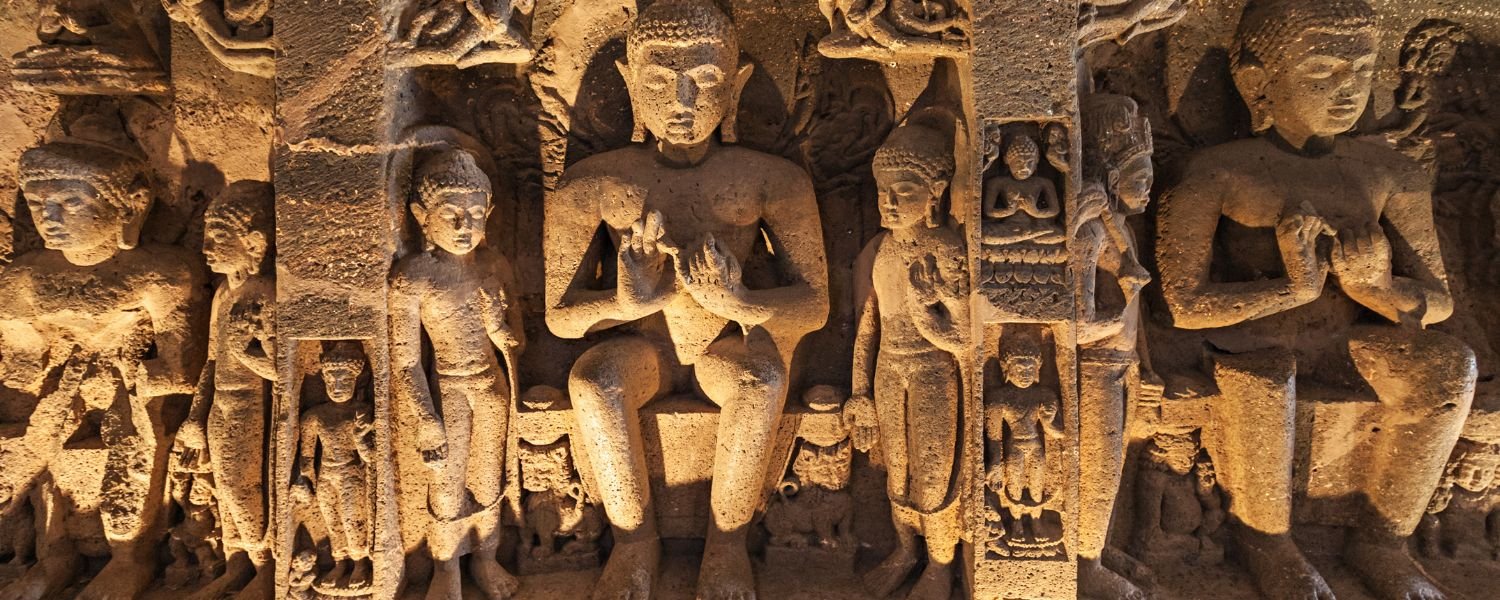
These caverns, which date from the sixth and seventh centuries, are the oldest in Ellora. Among them are:
Chaityas are prayer rooms featuring elaborate carvings and lofty ceilings.
Viharas are monastic complexes where monks live, study, and practice meditation.
enormous sculptures of Bodhisattvas, the Buddha, and symbolic lotus patterns.
Some of these caverns include tranquil settings ideal for introspection, as well as exquisitely carved pillars.
Caves 29–34, which are Jain caves
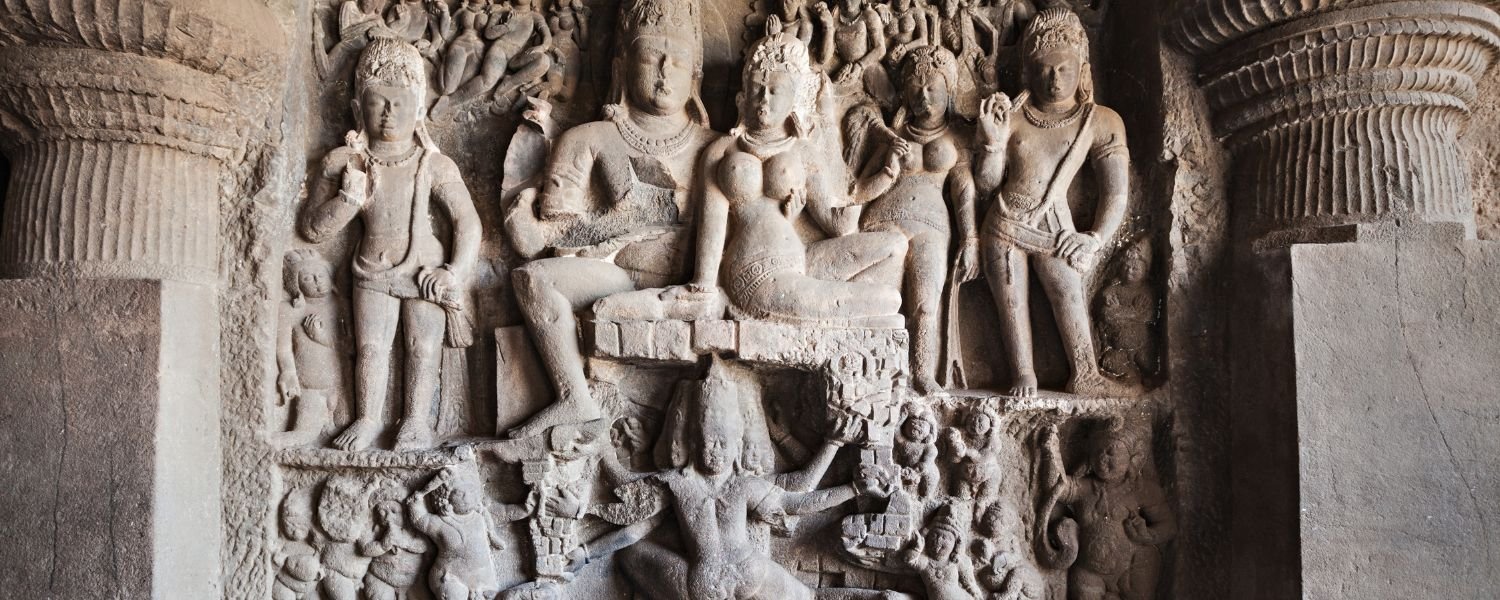
These caverns, which were carved in the ninth and tenth centuries, are part of the Digambara Jain sect. Despite their modest size, they are packed with detail, including:
Tirthankaras, or spiritual masters, with intricate carvings.
Gorgeous ceiling patterns and artwork with significant meanings.
Halls with several pillars and elaborate stone screens.
The simple style and profound spirituality of Jain architecture are reflected in Jain caves.
Cave 16: Temple of Kailasa
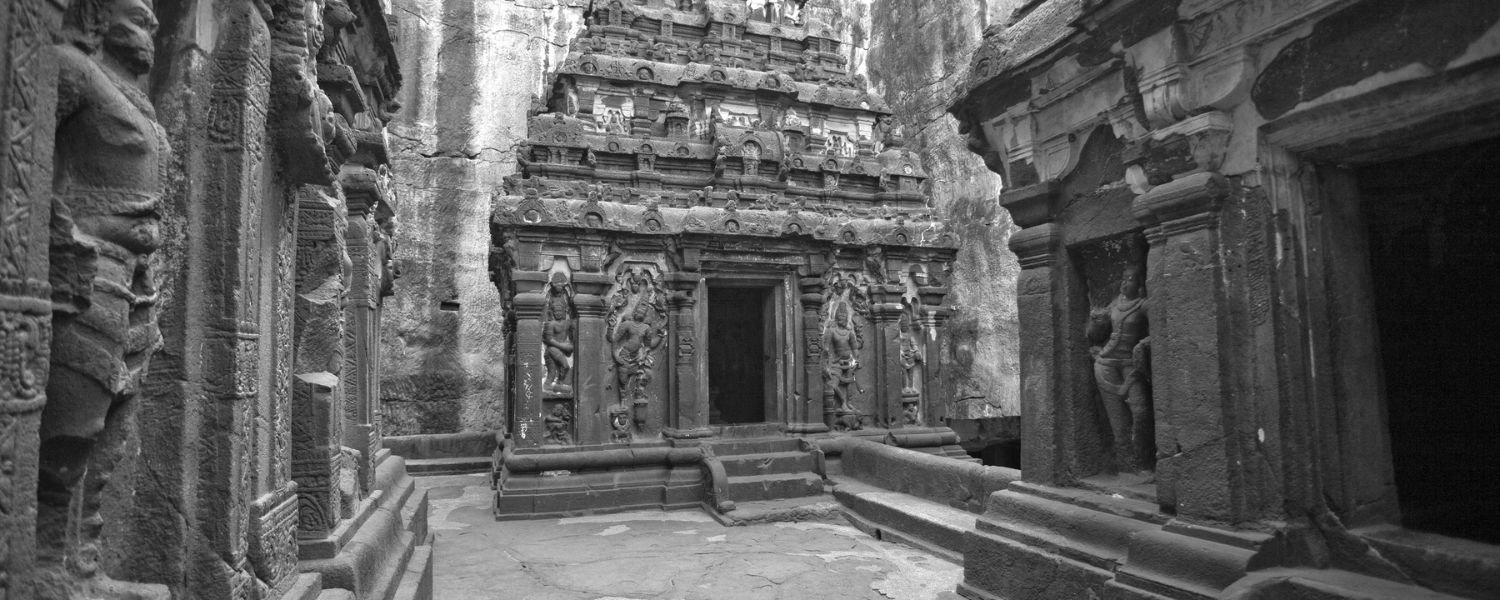
As previously said, this is the complex’s primary draw and its biggest and most impressive building.
Nearby Points of Interest
Daulatabad Fort

Approximately 15 kilometres away, this old fort provides stunning architecture and sweeping vistas from its perch on a conical hill.
Grishneshwar Temple

One of the 12 Jyotirlingas, or sacred shrines of Lord Shiva, this temple is only a short drive from Ellora and is a must-see for spiritual pilgrims.
Cultural Significance of Kailasa Temple
The Kailasa Temple is a spiritual and cultural landmark that transcends its physical form.
The Significance of Religion
The Kailasa Temple is very important to Hindus. It is thought to be a metaphor for Mount Kailash, the legendary residence of Lord Shiva. Even though the temple is centuries old, its energy is still very much alive, and many devotees come there on pilgrimage.
Heritage of Culture
The temple is a proud representation of India’s artistic heritage. It displays the abilities, creativity, and profundity of the Rashtrakuta dynasty, which dominated a large portion of central India. Mythology, spirituality, and nature are among the creative topics that provide light on ancient Indian civilisation.
UNESCO World Heritage Site
In 1983, UNESCO designated the Ellora Caves, which included the Kailasa Temple, as a World Heritage Site. This international accreditation highlights the site’s significance for all of humanity, not just for India.
Accommodations Close by
There are several places to stay close to Ellora if you’re considering a weekend or overnight trip.
Luxurious Hotels
Vivanta by Taj, Aurangabad: An upscale hotel with gardens, roomy accommodations, and opulent amenities.
Ellora and Ajanta caves are easily accessible from the cosy and well-appointed Ajanta Caves Resort.
Budget Options
Both Ellora and Aurangabad have a large number of reasonably priced hotels and lodges with basic amenities, tidy rooms, and easy access to the caverns.
Homestays
Book a homestay for a more intimate and cultural experience. This allows you to experience village life close to Ellora, engage with locals, and sample home-cooked meals.
Considerations for Visiting Kailasa Temple
Here are some useful pointers to help you get the most out of your trip:
Since Kailasa is a site of active worship, dress modestly by covering your knees and shoulders.
Camera Fees
While most places permit photography, some may charge a nominal fee for professional cameras or videography.
Footwear
Because there will be a lot of walking and rough stone surfaces, wear comfortable shoes.
Guides
You may make the most of your trip by hiring a local guide or employing an audio tour. They will narrate the stories, art, and history of what you are viewing.
Frequently Asked Questions (FAQs)
Q1: Are the Ellora Caves home to the Kailasa Temple?
Indeed, it is Cave 16 of the 34 caves that make up the larger Ellora complex.
Q2: What is the Kailasa Temple’s history?
King Krishna I of the Rashtrakuta dynasty constructed it in the eighth century, honouring Lord Shiva by carving it out of a single rock.
Q3: Is it possible for me to go to Kailasa Temple in the rainy season?
Yes, but exercise caution because the walkways may get slick. Additionally, before making travel plans, check the local weather conditions.
Q4: What is the approximate duration required to explore the Kailasa Temple?
To fully visit the temple, allow one and a half to two hours. Allow approximately four to five hours if you plan to see the full Ellora complex.
Q5: Is it permitted to take pictures inside Kailasa Temple?
Yes, personal photography is permitted, although a camera fee may be charged in some areas. Generally, drones and tripods are prohibited unless specific authorisation has been granted.
